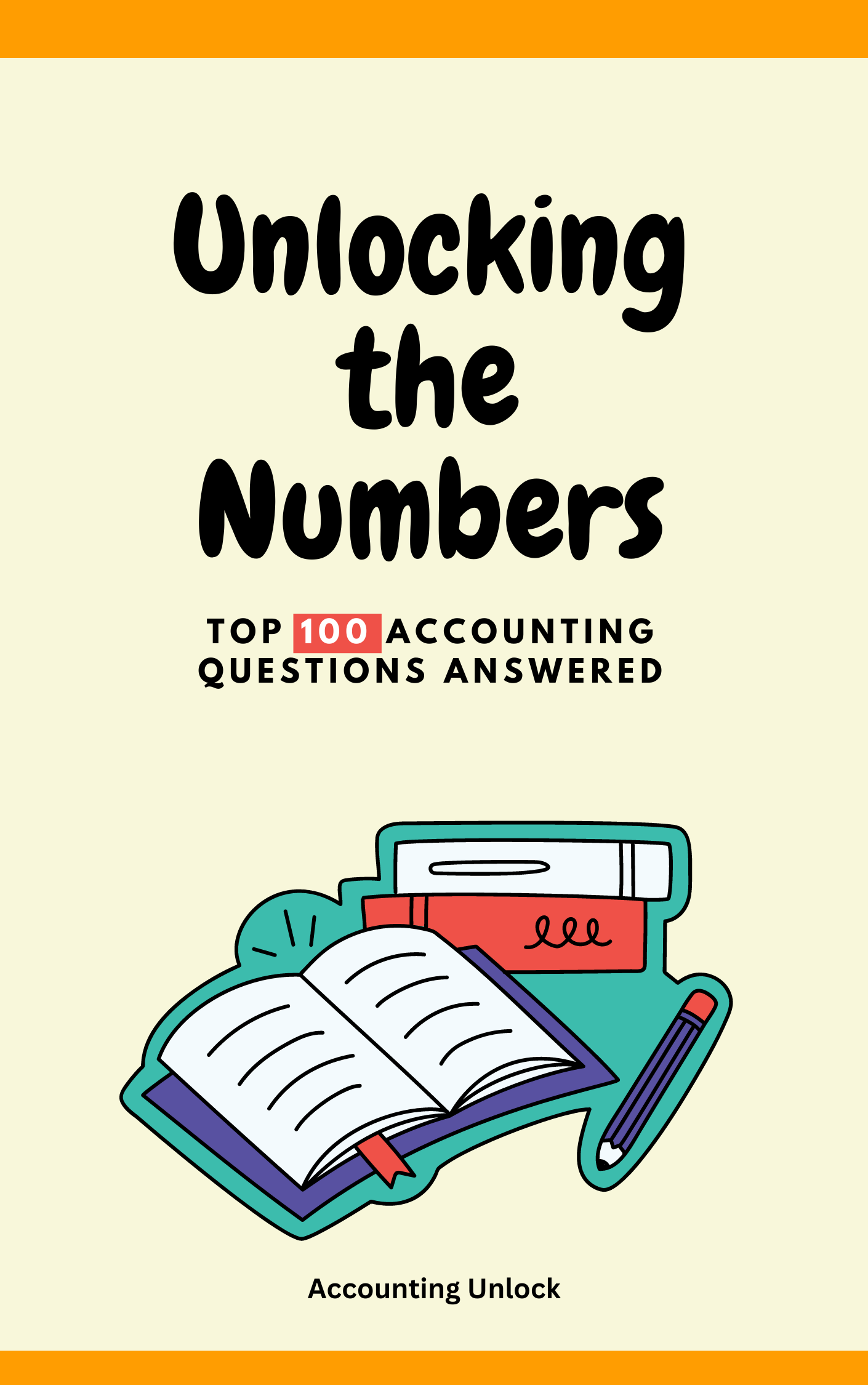Kick off your financial accounting journey with a solid grasp of the building blocks: accounting transactions. This chapter can feel daunting, but fear not! We’ve compiled 55 essential questions and bite-sized answers to guide you through the critical concepts, demystifying debits, credits, and everything in between. Prepare to conquer this chapter and boost your understanding for the rest of the course!
Questions and Answers:
1. What is a transaction?
A transaction is an economic activity that involves the exchange of goods, services, or money between two or more parties.
2. What is an event?
Events are occurrences that may or may not have financial implications. For example, sports, shopping, paying utility bills, and so on.
3. What is the difference between a transaction and an event?
The main difference between a transaction and an event is that a transaction involves a direct exchange of goods or services for money, whereas an event may or may not involve such an exchange.
4. What is the relationship between a transaction and an event?
There is a close relationship between events and transactions. Transactions originate from events. If the event does not occur, then the transaction cannot take place. Thus, in general, all transactions are events, but not all events are transactions.
5. What are the important characteristics of transactions?
Transactions have three key characteristics:
- Measurable: They involve quantifiable amounts of money or value.
- Exchangeable: Something of value is exchanged between two parties.
- Documented: They are recorded in the business’s accounting records.
6. What is the nature of a transaction?
A transaction is a type of event that involves the exchange of goods, services, or money and is recorded in accounting books.
7. What are the elements of a transaction?
The elements of a transaction are as follows:
- Parties: Who’s involved? (buyer, seller, lender, borrower)
- Amount: How much value is exchanged?
- Date: When did it happen?
- Account(s): Which accounts are affected?
8. Why isn’t every event a transaction?
Not every event is considered a transaction because some events have no financial impact on an organization or do not involve the exchange of goods or services.
9. What is the necessity of recording transactions?
Transactions are the building blocks of a business’s financial picture. Recording them accurately keeps track of income, expenses, assets, and liabilities, helping with:
- Decision-making: Understand where money is coming from and going to.
- Performance tracking: Measure progress towards financial goals.
- Tax compliance: Generate accurate reports for tax authorities.
10. What is the importance of recording transactions accurately?
Accurately recording transactions is important because it gives an organization a clear and reliable record of its financial activity, which is needed for making good business decisions, making financial statements, and meeting legal and regulatory requirements.
11. What is the classification of transactions?
Transactions can be classified as:
- External or internal
- Financial or non-financial
- Cash or credit
- Visible or invisible
- Business or non-business
- Capital or revenue.
12. What is an external transaction?
An external transaction takes place between a company and a third party, such as a sale to a customer or a purchase from a supplier.
13. What is an internal transaction?
Internal transactions are those that occur within the organization. These are typically invisible transactions. For example, depreciation on assets.
14. What is a financial transaction?
A financial transaction is any event involving money that results in a change in the organization’s financial position. For example, paid rent, purchased goods, sold goods, and so on.
15. What is a non-financial transaction?
Non-financial transactions refer to all events that do not involve money or do not affect the financial situation of individuals or organizations. For example, giving speeches in meetings, ordering products, and so on.
16. What is a cash transaction?
A cash transaction involves the exchange of money, such as paying cash for a purchase.
17. What is a credit transaction?
A credit transaction is the exchange of goods or services on credit, where payment is made at a later date, such as goods sold on credit.
18. What is the difference between a cash and credit transaction?
A cash transaction is the immediate exchange of cash for goods or services, whereas a credit transaction is the purchase of goods or services on credit with payment due at a later date.
19. What is a non-cash transaction?
A non-cash transaction is one in which no cash is exchanged. For example, depreciation, amortization, and so on.
20. What is a visible transaction?
A visible transaction is one that is easily identifiable, such as the purchase of inventory.
21. What is an invisible transaction?
An invisible transaction is one that is not easily identifiable, such as the provision of services.
22. What is a business transaction?
Business transactions are all of the daily transactions that a business organization conducts. For example, buying and selling.
23. What is a personal transaction?
Personal transactions are those that are carried out for personal and family life. For example, purchasing food, paying house rent, and so on.
24. What is a capital transaction?
Capital transactions are all transactions with long-term outcomes, i.e., for more than one fiscal year. For example, the purchase of machinery, the construction of buildings, and so on.
25. What is a revenue transaction?
Revenue transactions are those that have short-term results, i.e., those that end in a fiscal year. For example, salary payments, sales of goods, and so on.
26. What is the dual aspect of the transaction?
The dual aspect of a transaction refers to the fact that every transaction affects at least two accounts, one of which is debited and the other is credited.
27. What is an accounting equation?
An accounting equation represents the fundamental relationship between assets, liabilities, and owner’s equity.
28. What is the objective of the accounting equation?
The objective of the accounting equation is to ensure that the total value of assets is equal to the total value of liabilities and owner’s equity.
29. What is a basic accounting equation?
The basic accounting equation is:
Assets = Liabilities + Owner’s Equity.
30. What is an expanded accounting equation?
The expanded accounting equation is
Assets = Liabilities + Owner’s Equity + Revenues – Expenses – Drawings.
31. What are assets?
Assets are resources owned by an organization that have a monetary value, such as cash, receivables, inventory, goodwill, property, etc.
32. What are liabilities?
Liabilities are debts owed by an organization to third parties, such as loans, accounts payable, overdrafts, etc.
33. What is an owner’s equity?
Owner’s equity is the owner’s residual interest in the organization’s assets.
34. What are revenues?
Revenues are the inflows of economic resources resulting from the sale of goods or services.
35. What are expenses?
Expenses are the outflows of economic resources that occur as a result of the purchase of goods or services.
36. What are drawings?
Drawings are personal withdrawals made by the owner from the organization.
37. What is the source of the transaction?
The source of a transaction is the document or evidence that provides proof of the business transaction.
38. What are the source documents for transactions?
The source documents for transactions are:
- Invoices
- Cash memo
- Vouchers
- Receipts
- Checks
- Purchase orders, etc.
39. What is an invoice?
An invoice is a document that contains information about a sale, such as the products or services sold, the quantity, the price, and the payment terms.
40. Who prepares an invoice?
The seller prepares an invoice after providing goods or services on credit.
41. What is a cash memo?
A cash memo is a document that contains information about a cash sale, such as the products or services sold, the quantity sold, and the price.
42. Who prepares a cash memo?
The seller prepares a cash memo when a cash transaction takes place. It’s a simple receipt confirming the sale and amount paid for the purchased goods or services.
43. What is a voucher?
A voucher is a document that serves as proof of a financial transaction, such as a payment or a receipt of funds.
44. What is a debit voucher?
A debit voucher is a voucher that is used to record a payment or decrease in an asset or expense account.
45. What is a credit voucher?
A credit voucher is a voucher that is used to record the receipt of funds or an increase in a liability or revenue account.
46. What is a debit note?
A debit note is a document that is used to notify a customer of an owed amount or a debit entry made to their account.
47. Who prepares a debit note?
A seller prepares a debit note to decrease the amount owed by the buyer. This could happen if they discover an error in the original invoice or offer a discount after it was sent.
48. What is a credit note?
A credit note is a document that informs a customer of a credit entry made to their account or a reduction in the amount owed.
49. Who prepares a credit note?
The seller issues a credit note to increase the amount owed by the buyer. This might happen if they realize they undercharged on the invoice or if the buyer returns goods.
50. How are foreign currency transactions recorded in accounting?
Accounting records foreign currency transactions by first converting the foreign currency amount into the local currency using the current exchange rate and then recording the transaction in the appropriate accounts.
51. What is the impact of a transaction on the balance sheet and income statement?
A transaction can affect the balance sheet by changing the value of assets, liabilities, and equity, and it can also affect the income statement by affecting revenues and expenses.
52. What is a transaction analysis?
Transaction analysis is the process of examining a transaction to determine its impact on an organization’s financial statements.
53. What is the purpose of transaction analysis?
The purpose of transaction analysis is to make sure that all transactions are recorded correctly and consistently and to give businesses a way to make smart business decisions.
54. What are the steps in transaction analysis?
In accounting, analyzing transactions involves these key steps:
- Identify the event: Did something happen that affects the business’s finances? Like buying supplies or receiving customer payments.
- Classify the transaction: Is it external or internal? Cash or credit? Figure out its type and impact.
- Determine accounts affected: Which accounts (assets, liabilities, equity) are impacted by the transaction?
- Apply debit and credit rules: Increase assets and expenses with debits, and increase liabilities and equity with credits.
- Record the transaction: Enter the details in the accounting system, balancing the equation (debits = credits).
55. How are transactions recorded in a computerized accounting system?
Modern accounting software makes life easier! Transactions are entered electronically, often using pre-defined accounts and categories. The system automatically applies debit and credit rules and updates the balances in all affected accounts. Think of it as a high-tech accountant, keeping track of everything digitally.
Armed with this arsenal of questions and answers, you’re well on your way to mastering the “Accounting Transaction” chapter. Remember, consistent practice and applying these concepts to real-world scenarios are crucial for long-term understanding. Stay tuned for more Q&A posts to conquer the rest of your financial accounting journey!





